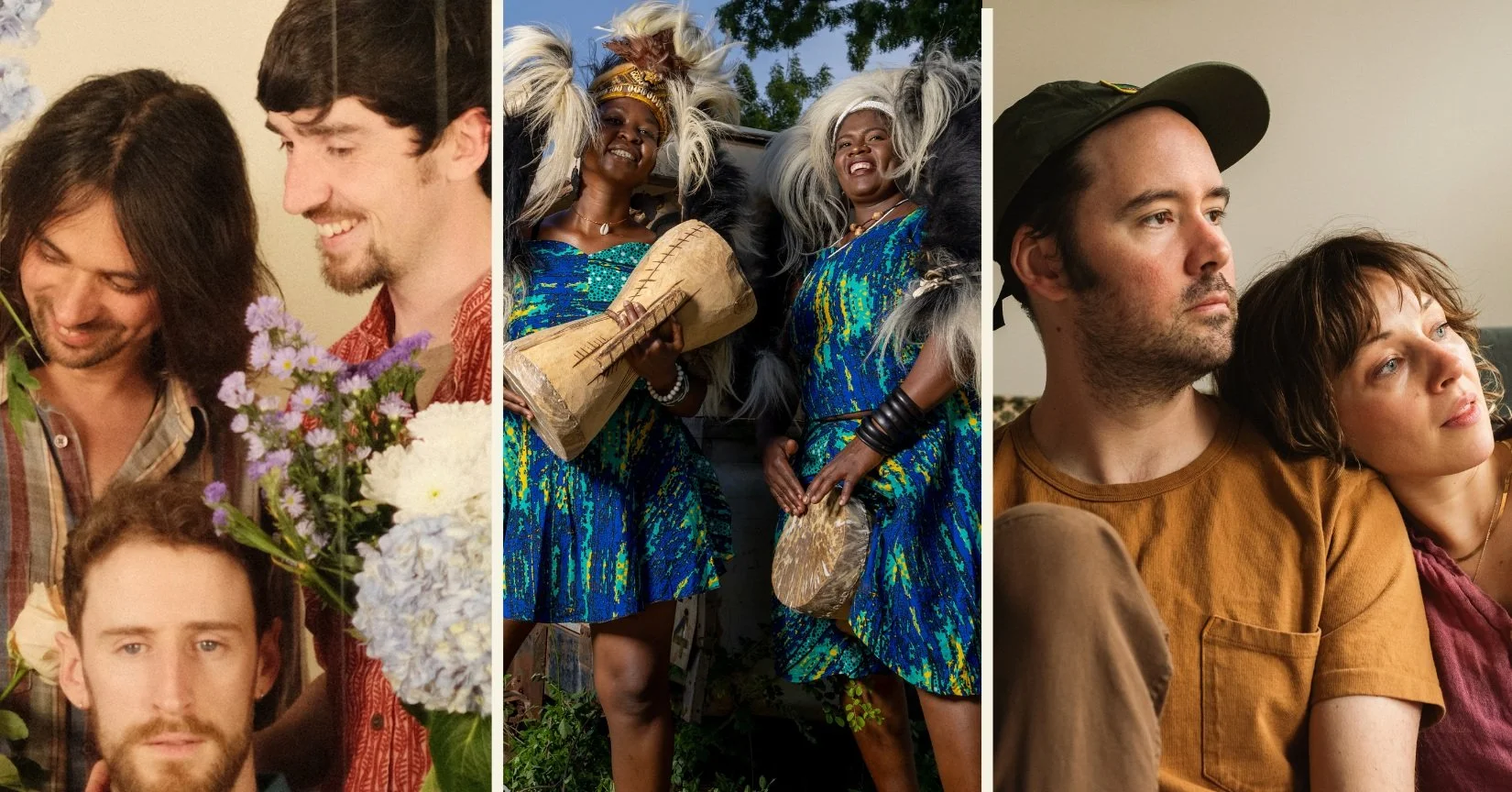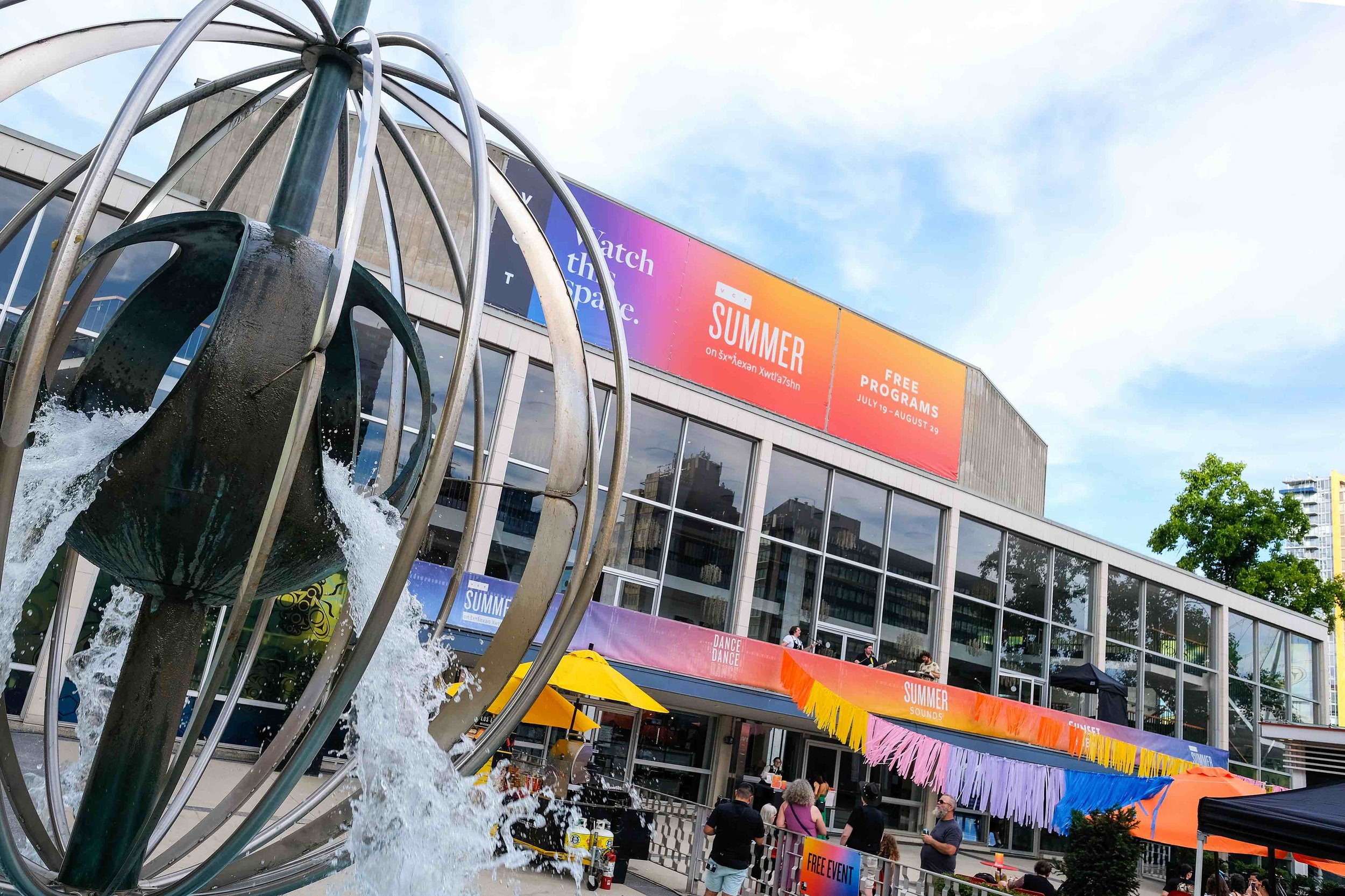A Spanish Hour? reimagines French one-act opera with a playful queer lens
An all-out cast helps bring to life J. Patrick Raftery’s vision for the story of rotating affairs, all set on a Toronto patio
Clockwise from top left, A Spanish Hour?’s Simran Claire, J. Patrick Raftery, and David Walsh.
A Spanish Hour? is at the Telus Studio Theatre at the Chan Centre for the Performing Arts on July 27 at 2 and 5 pm
A NEW REIMAGINING of Maurice Ravel's one-act comédie musicale L'heure Espagnole celebrates the queer community—on and off the stage.
Director and UBC School of Music associate voice professor J. Patrick Raftery, working with co-librettist and dramaturge Peter Tiefenbach, has reframed the 1911 French romantic comedy for 2SLGBTQIA+ characters in modern-day Toronto. But he’s also cast the new A Spanish Hour? with an all-out artistic team. That speaks to a proud new inclusivity in an opera world that’s very different from when Raftery’s career took him to the major opera houses of the world.
“It’s the first time in my career that I’ve worked with an all out group of queer people–it’s kind of amazing,” the veteran opera professor reflects to Stir on a break from rehearsals. “Now at this point in my life, I really do think we have a unique and different perspective and I think it’s important.”
Raftery adds he was unsure how artists would feel being asked to take part in a project that would be promoted as an all-queer production—and was happy to see the enthusiasm with which the team of young opera singers embraced it. A Spanish Hour? Stars Simran Claire, David Walsh, Madison Craig, Spencer Britten, and Andrew Love—some of them former students of Raftery’s.
“An out gay project for somebody of my generation—that would have stalled someone’s career,” Raftery says, adding of the artists in this production: “For many of them, it is their first experience portraying gay people in a gay environment.”
The early-20th-century French composer’s first opera originally centred around an unfaithful wife, Concepcion, who tries to hook up with several different lovers while her husband is away. But upon seeing it for the first time as a young Boston Conservatory student in 1977, Raftery recalls thinking about how much its plot reminded him of himself and his gay friends. It spoke to “people needing to be open”—sexual freedom and agency, as well as a fluidity of sexuality that he now sees as speaking to gender as well.
He points out the title’s fun reference to afternoon dalliances: “I think it’s really funny that he [Ravel] calls it A Spanish Hour? and it's only 50 minutes long. I think it’s a reference to a siesta when you might have a lover visit. So I think it is a joke.”
The new version has been years in the making, Raftery and Tiefenbach beginning to write the project during COVID times, and workshopping the piece two years ago. It’s been an enjoyable experience for Raftery, who says Tiefenbach and he come from the same era and share similar sensibilities and senses of humour.
The pair’s changes involved not just the plot but voice alterations that echo themes of gender fluidity: roles typically sung by a mezzo-soprano are now voiced as a tenor (Walsh) and the buffo-bass role is being sung by a mezzo-soprano (Claire).
Gordon Gerrard, former assistant conductor with the Vancouver Symphony Orchestra and current artistic director of City Opera, takes the podium.
The setting has changed from an 18th-century clockmaker’s house to a summer patio after a big event, offering plenty of farcical potential for various lovers to hide in sun-deck umbrellas (instead of inside the clocks of the original).
“Personally, I thought we all need a good belly laugh. So we’re all focused on having fun,” says Raftery, who hopes the piece can go on to have a longer life than this weekend’s two-show offering.
On a larger level, Raftery also sees the work as joyful celebration of a new, inclusive era of opera that contrasts the one he came up through.
“So much of my singing career was portraying other people,” he reflects. “You weren’t really representing yourself; you were representing others. You gave up yourself to become the character. But for last five or 10 years, it has turned toward artists really representing themselves.” ![]()













